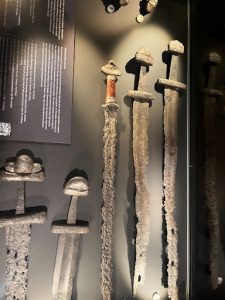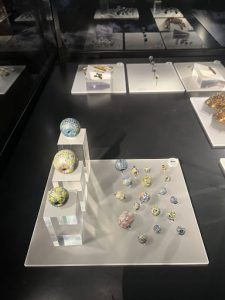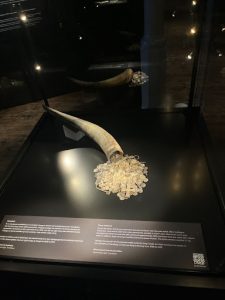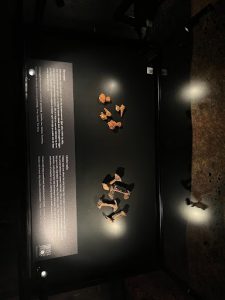By Connor Chervany, Beau Giddings, and Naomi Meints
As we settled into Trondheim after our early morning journey, we all noticed the immediate differences between here and our previous base of Stavanger. Trondheim was much more of what you might expect from a big city, with young people crossing busy streets and coming in and out of trendy shops. The city center combined the modern, brightly lit downtown with motifs of old Norwegian culture, with colorful wooden houses lining the shore and stone buildings that had stood for centuries. The grand churches and cobblestone streets were reminiscent of an old fantasy movie or video game. It’s easy to picture these streets bustling with armored vikings, traders of exotic goods, and mysterious figures. Luckily, our next day brought us a lesson that would set straight some of our stereotypes surrounding the vikings.
Our first day of class in Trondheim was held in a room called “The Tavern” (apt for our viking-themed lesson). Our lesson was accompanied by a dark blue glow shining from the large windows, reminding us of how dark the mornings are. Today, we listened to a lecture from our professors, and then presented short speeches to each other based on what we learned from various viking-themed history podcasts. We covered some of the big misconceptions, and emphasized that no, vikings were not superhuman giants, they did more than kill and pillage, and they certainly did not have horns on their helmets. We also learned more about the nuanced culture of the vikings, specifically their impressive travels. The vikings were one of the first true examples of globalization, as they used their impressive transportation technology and propensity for trade to connect themselves to the wider world. This brought back various goods and culture to the Nordic region, and likewise viking culture influences countries throughout the world.
After this lesson, many of us went to the NTNU University Museum, to observe their collection of viking artifacts. A few things stood out… like a pile of intricately designed silver coins spilling out of a hollow horn, or a case of heavy, weathered swords. Not everything was gray and worn, however, like you might see in stereotypical depictions of vikings. I recall a group of tiny glass beads, decorated carefully with brightly colored patterns, which was a pleasant surprise. I was struck by how well preserved they were, as well as how strangely modern they looked. Most interestingly was a case of large iron nails. They were heavily rusted, to a neon orange color, but still in rather good shape for surviving about 1,00 years. These nails once held together a large viking ship, helping construct the key to the vikings’ success. Without these small pieces and every bit of technological advancement, the global world of the vikings wouldn’t be possible, and we wouldn’t be talking about it in modern day Trondheim!



